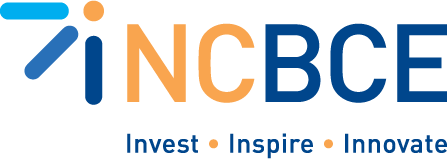Essential Questions
- How can I use what I know about one computing system to learn about another?
Big Ideas
Computing devices are constantly changing. Just in your own lives, the number and types of devices you’ve come in contact evolve over time. Some disappear. It’s unlikely you’ll run across a DOS-based computer or a dot-matrix printer, yet computing devices do have some similarities. You can use what you know about types of computing devices and their components to help maintain, troubleshoot, and even create computing systems for different needs.
Note: Wireless and IoT devices are explored again in Unit 6. You may want to dig deeper into wireless devices then if time is an issue.
Connection to Student Lives
Students inventory/identify where and how they interact with computing systems in their lives, like with their phones, cars, appliances, gaming, medical devices, and online services, and other examples.
Framing Problem
The course will use a simulated workplace setting to provide hands-on exploration of Chromebooks, desktops, and mobile devices with actual technicians from IT businesses or the local school district. Students will take devices apart and create annotated guides that they can later use in the Help Desk program as job aids.
Students will work in teams with guidance from the teacher and/or technicians to set up a computer system following safety and healthy working practices.
Cornerstone Assessment
Teams create an annotated user guide or help desk packet that they can use later in their work as a member of the Help Desk.
DPI Standards
- 1.02 Identify the types of computing devices
- 1.03 Identify internal computer system components.
- 1.04 Identify common computer connector types.
- 1.05 Identify common peripheral devices.
Knowledge
- How a computer processes data
- Know the functions and capabilities of types of computing devices, such as PCs, servers, mobiles, and home automation.
- The differences between input, processing, output, and storage
- How the components of a home automation solution work together
- Other systems, such as vehicles and medical devices can be connected to the Internet
Skills
- Describe how a computer processes data
- Describe the form factors of different types of computing devices
- Set up a computer system with regard for safety and healthy working practices
- Navigate an OS and use input devices effectively
Vocabulary
- Input - the computer receives data entered by the user through peripheral devices, such as mice, keyboards, scanners, cameras, and microphones.
- Output - the processed data is shown or played to the user through an output device, such as a monitor or loudspeaker system.
- Processing - the data is written to memory and manipulated by the CPU, acting on instructions from the operating system and applications software.
- Storage - the data may be written to different types of storage devices, such as hard disks or optical discs, because data stored in most types of system memory is only preserved while the computer is powered on.
Supporting Vocabulary
- application
- binary number
- capacity
- Central Processing Unit (CPU)
- command
- computer
- data
- Ergonomics: Repetitive Strain Injury (RSI)
- fault tolerant
- gaming consoles
- gestures
- hardware
- home automation: thermostats, security systems, IP cameras, home appliances, streaming media
- hot keys
- Hub
- Information Technology (IT)
- input devices: mouse, touchpad, keyboard
- interface
- Internet
- Internet of Things (IoT)
- laptop
- mainframe computer
- medical devices
- motherboard
- network
- network client
- Operating System (OS)
- Original Equipment Manufacturers (OEM)
- peripheral device(s)
- Power-On Self-Test (POST)
- rack shelving system
- server
- smartphone
- software
- speed (of a CPU)
- system memory or Random Access Memory (RAM)
- tablet
- transistor
- Unmanned Aerial Vehicle (UAV) or drone
- user
- workstation or desktop
Weekly Map
Monday
Introduction to problems: Generating Help Desk Knowledge Base and Identify Components of a Computer System
Pre-assessment online
Team meetings to develop project plan and goals
Tuesday
Review content resources with whole group
Small group and independent exploration of resources
Contribute to team project
Wednesday
Hands-on exploration with IT professionals
Team progress check with supervisor (using project plan
Thursday
Hands-on exploration with IT professionals
Small group and independent exploration of resources
Contribute to team project
Friday
Team progress check with supervisor or sharing of progress with whole group
Monitor progress and adjust project plan as necessary
Lesson Ideas
Students work in teams to review Units 1.1 and 1.2 in their textbook. The students collaborate on a Frayer-type digital presentation that records and illustrates key vocabulary and concepts in the Units. Students contribute to these files throughout the semester to prepare for the CompTIA certification exam and to contribute to the Help Desk knowledge base.
Technicians introduce students to key functions and capabilities of different computing devices (e.g., desktop, Chromebook, smartphone). In teams collaborating with technicians, students take apart, document (in annotated charts), and put devices back together again. Documentation is used to support the Help Desk throughout the semester.
In teams, students follow a protocol to correctly set up a computer system, either a desktop or a Chromebook, and describe how it exhibits safety and healthy working practices.
Potential Resources
The Official CompTIA ITF+ Instructor’s Manual and Student Guide: Units 1.1 and 1.2
Frayer Diagram Template (slide deck, document, or other)
Internal and external images of desktops, laptops, and Chromebooks
Protocol for setting up a district computer system, either a desktop, Chromebook, or other.
ITProTV
Tech Gee
- Basics of Computing & Processing with Tech Gee shares examples related to objective 1.3 in a short video that includes a Check on Learning at the end.
- Common Computing Devices & Their Purposes | CompTIA IT Fundamentals FC0-U61 | 2.6 (21:13). Longer lecture-based video that covers concepts in objective 2.6.
Khan Academy:
Code.org:
- Bill Gates, the founder of Microsoft, kicks off the How Computers Work playlist with relatively short videos on computing basics.
